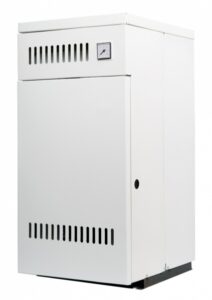 As we enter the final stretch of winter, we recommend you think about how your heating system performed and if you’ll need to have it replaced at some point during the middle of the year so you’ll be ready for the next winter.
As we enter the final stretch of winter, we recommend you think about how your heating system performed and if you’ll need to have it replaced at some point during the middle of the year so you’ll be ready for the next winter.
If you’re due to have an upgrade to your home heating system, there are many options available. One example that’s popular and which we often recommend to our customers is the high-efficiency condensing furnace.
In our last post, we talked about heating system efficiency: it’s not a guarantee you’ll save money, but a high-efficiency system is a great place to start. You just have to make sure you have an excellent Howell, MI, HVAC contractor helping you so you will end up with the ideal heating system that will deliver what it promises and. With this in mind, let’s look at the condensing furnace, a heating system with impressively high energy efficiency.
The Basics of Condensing Furnaces
The difference between a condensing furnace and a standard mid-efficiency natural gas furnace is that a condensing furnace has a second heat exchanger where additional heat is generated from the fuel supply.
In a standard furnace, hot combustion gas collects in the heat exchanger and raises the temperature of the metal walls of the exchanger. This heat transfers to the air moving through the furnace and then into the ventilation system. The combustion gas cools into a vapor that exits the furnace and the house through a flue.
In a condensing furnace, the vapor moves from the first heat exchanger to a second one. In this exchanger, the vapor is condensed, which causes the release of more heat to warm the air. The remaining exhaust left over from this process then vents safely out of the furnace.
Because of the second exchanger, the condensing furnace is able to get the maximum amount of energy possible from its fuel source and loses less to exhaust. A condensing furnace can have an AFUE rating of 98.5%, which means it converts 98.5% of its natural gas supply into heat and loses only 1.5% to exhaust. Compare this to non-condensing furnaces, which have AFUE ratings ranging from 70% for old furnaces to 90%. No matter what kind of mid-efficiency furnace you’re replacing, a condensing furnace will have improved energy efficiency. And this can mean significant savings.
Finding the Right New Furnace
Condensing furnaces are more expensive to install than standard furnaces, and they may also require upgrades to the ventilation system and the ductwork. In other words, they aren’t ideal for all homes, and that’s why it’s always wise to work with HVAC professionals to ensure you have the best new heating system for your home. If you are interested in installing a condensing furnace for your house, get in touch with us. We’ll work closely with you to find your best heating future and the system that will meet your needs.
First Choice Heating & Cooling serves Fenton, Linden, Holly, and the Surrounding Areas. If your home had a voice … it would call First Choice!
